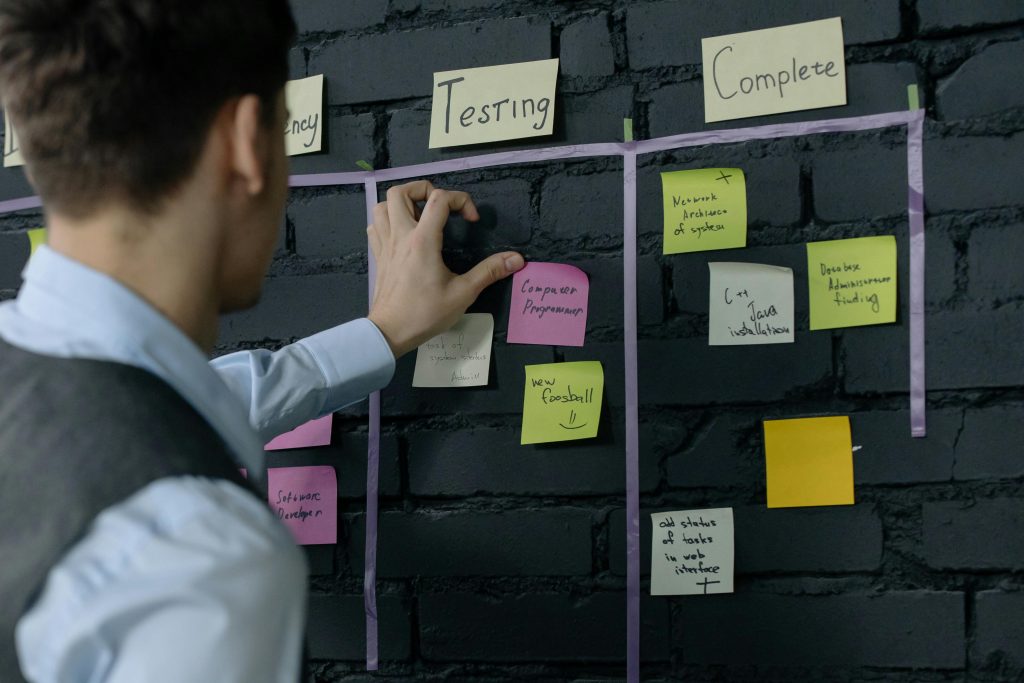Demystifying Markup to Margin Tables: Streamlining Your Pricing Process

Understanding Markup and Margin
Before we delve into the tables markup margin chart, let’s refresh our understanding of markup and margin:
- Markup is the amount added to the cost of a product to determine its selling price, typically expressed as a percentage of the cost.
- Margin is the profit expressed as a percentage of the selling price.
While related, these concepts are distinct, and confusing them can lead to pricing errors that affect profitability.
What is a Markup to Margin Table?
A markup to margin table is a pre-calculated reference tool that shows the equivalent margin percentage for various markup percentages (or vice versa). These tables eliminate the need for manual calculations, saving time and reducing the risk of errors in pricing decisions.
Structure of a Markup to Margin Table
A typical markup to margin table consists of two main columns:
- Markup Percentage: Usually in increments of 1% or 5%.
- Equivalent Margin Percentage: The corresponding margin for each markup percentage.
Some tables may include additional columns such as markup margin chart:
- Multiplier: The factor by which cost is multiplied to get the selling price.
- Gross Profit Percentage: Another way of expressing the margin.
Here’s a simple example of a markup to margin table:
Markup % | Margin % | Multiplier |
20% | 16.67% | 1.20 |
25% | 20.00% | 1.25 |
30% | 23.08% | 1.30 |
35% | 25.93% | 1.35 |
40% | 28.57% | 1.40 |
Benefits of Using Markup to Margin Tables
- Time Efficiency: Eliminates the need for manual calculations, speeding up the pricing process.
- Error Reduction: Pre-calculated values minimize the risk of mathematical mistakes.
- Consistency: Ensures all team members are using the same conversion values.
- Quick Decision Making: Allows for rapid assessment of different pricing scenarios.
- Educational Tool: Helps employees understand the relationship between markup and margin.

Creating Your Own Markup to Margin Table
While pre-made tables are widely available, creating your own can be beneficial markup margin chart, especially if you need specific increments or ranges. Here’s how:
- Decide on your markup percentage range and increments.
- For each markup percentage, calculate the equivalent margin using the formula: Margin % = [Markup % / (100% + Markup %)] x 100
- Calculate the multiplier: Multiplier = 1 + (Markup % / 100)
- Organize the data into a clear, easy-to-read table format.
Limitations of Traditional Markup to Margin Tables
Despite their utility, traditional markup to margin tables have limitations:
- They’re static and don’t adapt to changing market conditions.
- They don’t account for variable costs that may change with volume.
- They assume a consistent markup across all products, which isn’t always the case.
- They don’t consider market demand or competitor pricing.
- Physical tables can be misplaced or become outdated.

Elevating Your Pricing Process with Linbis Distribution Software
This is where modern technology comes into play. Linbis distribution software transforms the concept of markup to margin tables into a dynamic, markup margin chart intelligent pricing tool that overcomes the limitations of traditional tables.
Dynamic, Real-Time Conversion
Unlike static tables, Linbis provides:
- Real-time conversion between markup and margin based on current costs and market conditions.
- Automatic updates when underlying costs change, ensuring your pricing is always based on the most recent data markup margin chart.
- The ability to handle variable costs that change with volume, providing more accurate pricing insights.
Customizable Tables and Views
With Linbis, you can:
- Create custom markup to margin tables with specific increments or ranges that suit your business needs.
- Set up different tables for various product categories or business units.
- Customize the display to include additional relevant information such as suggested retail prices or competitor pricing.
Intelligent Pricing Recommendations
Linbis goes beyond simple conversion, offering:
- AI-driven pricing recommendations based on historical data, market trends, and competitive analysis.
- Alerts when margins fall below specified thresholds, allowing for quick corrective action.
- Scenario modeling to visualize the impact of different markup strategies on overall profitability.
Integration with Other Business Systems
Linbis doesn’t operate in isolation. It integrates with your:
- Inventory management system to reflect real-time costs and stock levels.
- CRM to incorporate customer segmentation into pricing strategies.
- ERP system for a holistic view of how pricing affects overall business performance.
Multi-Channel Pricing Support
In today’s omnichannel business environment, Linbis helps by:
- Maintaining consistent pricing across all sales channels while accounting for channel-specific costs.
- Providing channel-specific markup to margin tables that reflect the unique economics of each sales channel.
- Offering a unified view of your pricing strategy across all channels.
Historical Data Analysis and Forecasting
Linbis leverages your historical data to:
- Analyze past pricing strategies and their impact on sales and profitability.
- Identify seasonal trends that might affect optimal markup percentages.
- Forecast future pricing trends to help you stay ahead of the market.
Automated Reporting and Dashboards
Say goodbye to manual table lookups. Linbis offers:
- Automated generation of markup to margin reports.
- Customizable dashboards that combine markup/margin data with other key performance indicators.
- Scheduled distribution of pricing insights to key stakeholders.
Collaborative Tools
Linbis enhances team collaboration with:
- Shared access to pricing data and tables across your organization.
- Role-based permissions to ensure data security and relevant access.
- Commenting and annotation features for team discussions on pricing strategies.
Real-World Applications of Advanced Markup to Margin Tables
Let’s explore how businesses can leverage Linbis’s advanced capabilities:
- Retail Price Optimization: A fashion retailer uses Linbis to create dynamic markup to margin tables for different product categories. The software automatically adjusts markup percentages based on seasonality and inventory levels, ensuring optimal pricing throughout the year.
- Distribution Channel Management: A wholesale distributor utilizes Linbis to maintain different markup to margin tables for various distribution channels. The software accounts for channel-specific costs and competitive landscapes, enabling the distributor to maximize profitability across all channels.
- New Product Launch: A consumer electronics company launching a new product uses Linbis’s scenario modeling feature to test different markup strategies. By incorporating competitor data and demand projections, they identify the optimal pricing strategy for a successful product launch.
- Supplier Negotiation: A manufacturing company leverages Linbis’s dynamic tables during supplier negotiations. By instantly visualizing how different cost scenarios impact their margins, they can make informed decisions quickly, ensuring that new supply contracts maintain desired profitability levels.
Implementing Advanced Markup to Margin Tables in Your Business
To make the most of advanced markup to margin tables using Linbis:
- Ensure Data Quality: Regularly audit and clean your pricing, cost, and sales data to ensure accurate conversions and insights.
- Train Your Team: Provide comprehensive training on how to use and interpret the dynamic tables and associated features.
- Start with Basics: Begin by replicating your current markup to margin tables in Linbis, then gradually incorporate more advanced features.
- Customize to Your Needs: Take advantage of Linbis’s customization options to create views and reports that align with your specific business processes.
- Regular Review: Set up periodic reviews of your pricing strategies using the insights gained from your dynamic tables.
- Embrace Automation: Use Linbis’s automated features to streamline your pricing processes and free up time for strategic decision-making.
- Foster a Data-Driven Culture: Encourage your team to base pricing decisions on data and insights provided by Linbis, rather than gut feeling or tradition.

Conclusion: The Future of Pricing is Dynamic and Intelligent
In today’s fast-paced business environment, static markup to margin tables are no longer sufficient. The future of pricing lies in dynamic, intelligent systems that provide real-time insights and adapt to changing market conditions.
Linbis distribution software represents this future, offering businesses of all sizes the ability to:
- Convert between markup and margin dynamically, considering all relevant factors.
- Make data-driven pricing decisions quickly and confidently.
- Stay agile in the face of changing costs, demand, and competitive landscapes.
- Optimize profitability across products, channels, and market segments.
By embracing these advanced pricing tools, businesses can transform their pricing process from a static, reactive task to a dynamic, proactive strategy. In doing so, they position themselves to not just compete, but to lead in their markets, driving profitability and growth through intelligent, data-driven pricing decisions.
As you consider the future of your business’s pricing strategy, ask yourself: Are you still relying on static tables and manual calculations, or are you ready to embrace the power of dynamic, intelligent pricing tools? With solutions like Linbis, the choice to elevate your pricing process has never been clearer – or more impactful on your bottom line.
